If you have ever owned a cell phone, you have passed or been stuck in “dead” zones, areas where phone reception is terrible or non existent. Generally those times make you want to fling your phone out the door. As an owner of an iPhone 3G, who lives in a metropolitan city I have had my fair share of dropped calls. At times it has been so bad that I had to manually change the cell network to EDGE to maintain phone contact. This is annoying to say the least.
Cell Ranger, a division of Best Signal Wireless Inc, has released a new product to relieve those cell signal lapses – the Cell Ranger. This device increases the signal strength to your cell phone using a cellular amplifier. There are two versions of this product, the Port which can be plugged into a powered USB connector and the Stix model which uses a cigarette lighter for power. The Cell Ranger is really simple to setup and use; it comes with a magnetic antenna and fifteen feet of cable. For today’s review, we will be looking at the Cell Ranger Port.
The Cell Ranger press kit touts a two to three bar signal improvement in signal strength which allows improved telephone and data transmission. It boosts the 800Mhz and 1900 MHz signals and works with almost all carriers except the Sprint/Nextel networks.
After using it for a few weeks in various locations, I found it does work well in some situations and not at all in other locales.
Here is the unboxing video:
As we saw in the video, the entire device can be seen with the plastic packaging. The Cell Ranger Port is one unit with the USB connector on one end and the antenna with a magnetic base on the other separated by fifteen feet of RF cable. The device is primarily black with the Cell Ranger logo and an activity light at the back of the USB connector with five grey strips supposedly representing a cell phone signal meter. The antenna features a very powerful magnetic base; I would recommend keeping this antenna away from any computer components or throwing it into your laptop bag, otherwise you may find some corrupted data!
The Cell Ranger Port contains a microprocessor which actively analyzes cellular signals and controls amplification to provide optimal call quality without affecting the carrier’s network. Cell Ranger figured out that the majority of dropped calls related to problems with the downlink signal which is the signal being sent from the cellular tower to the user’s cell phone. Generally, the cellular antennas and components found in the towers were more sensitive than the equivalent parts found in cell phones and data cards, meaning the downlink connection is less stable than the uplink one.
Cell Ranger devised how to solve this problem by amplifying this downlink signal that is sent from the cellular tower. By providing a stronger signal, the cellular device will have less trouble maintaining a stable connection to the network. Since the Cell Ranger Port only amplifies the downlink signal, this does not affect the carrier’s network or signal noise levels. The microprocessor in the Cell Ranger updates the signal levels and provides the necessary amplification while checking this information every two seconds for optimal call quality.
Specifications:
The Cell Ranger PORT is an Intelligent Amplifier that boosts signal strength to your cellphone or laptop air card. Cell Ranger is a next-generation microprocessor-driven system that gives you reliability and performance enhancements not found with “mesh” stick-on and “repeater” antenna boosters.
The Cell Ranger PORT is easy to install: just place the magnetic antenna near a window (at least 8 feet away) and then plug the unit into your laptop’s USB port. After that, Cell Ranger’s advanced circuitry does the rest.
Whether using the STIX for your car or the PORT for your laptop, you can depend on Cell Ranger for the optimum in communications performance.
Cell Ranger equipment supports Auto and Laptop usage across all North American cellular carriers* and all types of cellphones – from the most basic handsets to the latest smartphones!
Cell Ranger employs unique cutting-edge technology in a convenient, compact form, allowing you trouble-free communication in almost any location!
Cell Ranger’s 800-1900 MHz cellular amplifier provides up to 50 dB signal gain (an extra 2dB over other devices’ 48 dB) and amplifies GSM and CDMA cellular* signals.
The most carrier-friendly device available, Cell Ranger is the first device of its kind that preserves cellular network integrity. And when used properly, Cell Ranger will not interfere with Bluetooth headsets or GPS systems.
The Cell Ranger is your personal, on-the-go signal booster, just the thing to keep your communications open and clear wherever life takes you.
* Note: Cell Ranger units work in North America only and do not currently support Sprint/Nextel networks.
Unit Dimensions: 5” x 1.5” x 0.9”
Weight: 0.3 Lbs.
Installation could not be any simpler, just plug the device into a USB port, extend the cable out as much as possible and mount the antenna on metal surface. Cell Ranger recommends pointing the antenna at the best line of sight for reception preferably near a window with a wall or some other barrier between the antenna and USB connection to prevent any feedback effects. Supposedly, this isolation increases the performance of the Cell Ranger.
To test the Cell Ranger Port, I used the following tools: An iPhone 3G, the iPhone 3G Field Test Mode to measure signal strength, the DSLReports iPhone Speed Test App to measure data transfer speed and finally the human ear during a telephone call.
For signal testing entering *3001#12345#* and pressing the call button brings up a iPhone 3GField Test menu. In the top left corner of the iPhone screen is a numeric value. The signal strength is measured in negative values, thus a higher number means a weaker signal. Weak signals are in the -107 dBm to -90 dBm range, while the stronger signals can be found in the -80 to -70 dBm range.
I placed the Cell Ranger in three environments: one where signal reception was spotty but present for the majority of the time, in an area where there was no reception but one or two signal bars were present on the iPhone and the third was in a vehicle driving through known dead spots. The Cell Ranger Stik is designed for vehicular use with a built in cigarette adapter plug, but the Cell Ranger Port can also be used in vehicle by plugging it into a cigarette lighter powered USB connector.
The first location I tested was the basement of my house, where I could get adequate reception, but from time to time, the signal would spontaneously drop out. Using the Field Test mode, I noticed a signal improvement from the -90s to -80s. There was even a reading around -75 dBm! Testing the data transfer speeds, I was able to see a latency drop from 1249 to 201 using the Cell Ranger, download speeds also increased from 431 to 813 kb/s and upload speeds stayed the same at around 310 kb/s. Of course, these numbers are nice, how did the Cell Ranger Port fare with actual phone calls? Actually quite well, the dropped calls that I was acquainted with became a thing of the past. So far so good!
The next test involved an hour drive into the city. Using a USB cigarette lighter plug from Monster Cable, I was able to plug the Cell Ranger Port into my car and attached the antenna to the roof of my car using the magnet base of the antenna. Normally on this drive, I would drop phone calls at three specific locales during the trip. With the Cell Ranger Port in position, this did not occur and I had a non stop conversation during the whole drive. Since the signal strength varied immensely during the drive, as I was constantly passing cell towers along the way, it was not feasible to get a good measurement of signal strength and data transfer speeds.
The final location was in the middle of a building in Manhattan, where -105 and -113 dBm were the norm on the Field Test mode screen, meaning no serviceable signal was available. Plugging in the Cell Ranger Port with the antenna and cable fully extended and repositioned multiple times, the best I was able to get was a -87 dBm level with spotty telephone reception. Data transfer speeds were non existent as the data network was basically unreachable. Unfortunately, the Cell Ranger is dependent on receiving at least minimum signal threshold to actually provide real world benefits.
Conclusion:
The Cell Ranger Port is an interesting device, allowing an increase in signal strength on most cellular phones. It works well in areas with fair to moderate cellular signal strength, giving a 10 point increase in dBm in some cases. This translates into better call quality and data transmission speeds. In areas notorious for dropped calls, the Cell Ranger Port can be a godsend. Unfortunately, the Cell Ranger Port can not increase the signal enough in “dead” zones where there is no chance of making or receiving a call, to make a difference in reception.
Is the Cell Ranger worth the price? That depends on the environment you are planning on using the device in. For car rides, I found it to be a terrific, helping to snuff out the dropped calls that I was painfully resigned to live with. If you are stationed in an area where the Cell Ranger has a clear line of sight to a cell tower, then it will make a difference.
Pros:
Portable
Increases cellular signal in most cases
Improved data speeds
Cons:
Strong magnet on antenna, keep away from sensitive electronics
Requires cable to be fully extended for maximal effectiveness
Requires user to be within six feet of the device
Expensive
Does not work with Sprint/Nextel network
| Grades: | |
| Overall |  |
| Design |  |
| Performance |  |

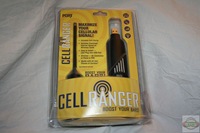
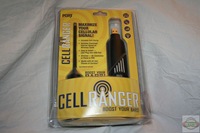
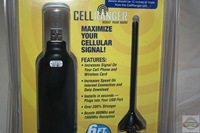
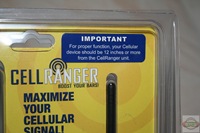
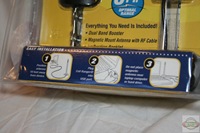
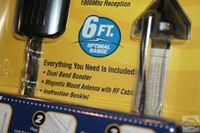
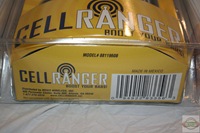
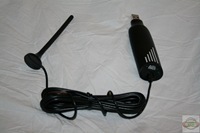
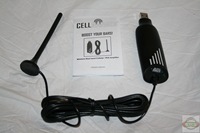

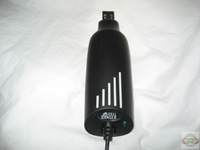
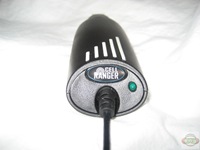
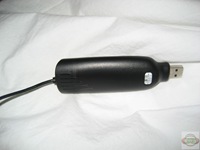
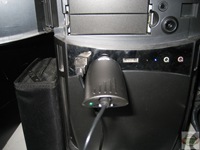
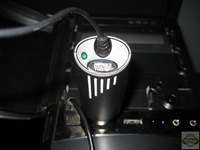
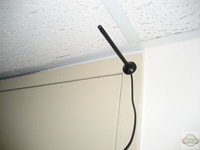
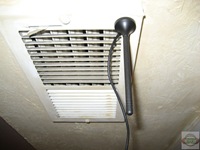
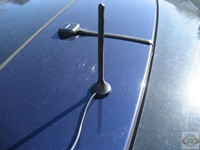
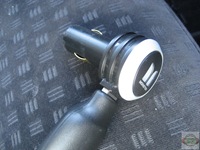
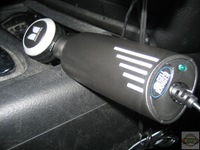
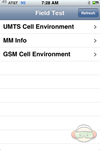

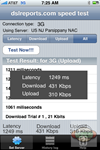
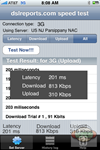
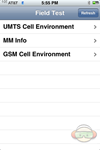
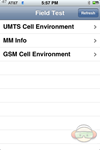




9 comments for “Cell Ranger Port”